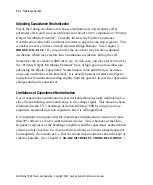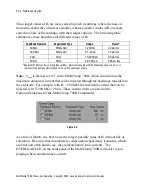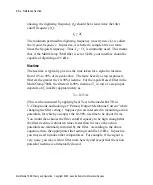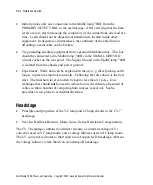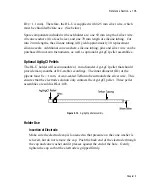
100
•
Reference Section
(G
Ω
) so this circuit can measure very small currents (pA). The differential
amplifier in the BOOST CIRCUIT does this calculation of I
e
. Subsequent
amplifiers are used to scale the gain and remove voltage offsets.
High Frequency Boost
A fundamental problem of this circuit when used for patch clamping is that the
output bandwidth of the probe is inherently low. To a first approximation, the
product of R
f
and the stray capacitance sets the bandwidth across it. For
example, if R
f
is 500 M
Ω
and the stray capacitance is 0.5 pF, the bandwidth is
about 600 Hz. To overcome this limitation, the probe output is passed through
a high-frequency boost circuit. The gain of this circuit is proportional to the
frequency.
The high-frequency boost is applied to the output of the I-V converter and
cannot influence the events at the electrode. Thus, one might conclude that the
voltage clamp of the electrode must also be slow. This is not the case, for the
following reason. The PROBE op amp does everything it can to keep the
voltage at its ‘–’ input equal to the command voltage at its ‘+’ input. If the
command is a rapid step, then the voltage at the ‘–’ input (
i.e.
at the back of the
electrode) is also a rapid step. This means the voltage clamp of the electrode is
fast. The RC filtering effect mentioned above applies only to the
output
of the
I-V converter, which can therefore be subjected to
post hoc
boosting.
What is Clamped During Voltage Clamping?
We were careful to state in the above discussion that it is only the back of the
electrode that is voltage clamped, not the cell membrane. The voltage at the
cell membrane may differ from that at the back of the electrode because of
bandwidth and voltage errors due to uncompensated series resistance (R
s
). For
this reason, it is always important to consider using Rs compensation. (See
Chapter 5,
SERIES RESISTANCE COMPENSATION
.)
MultiClamp 700B Theory and Operation, Copyright 2005 Axon Instruments / Molecular Devices

